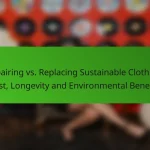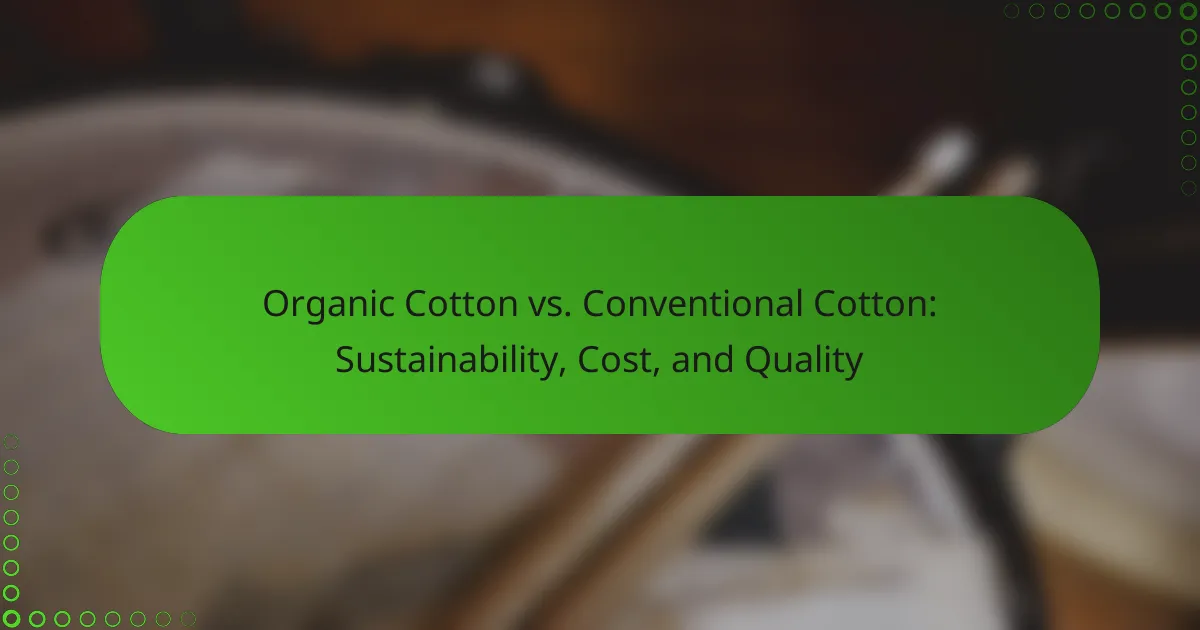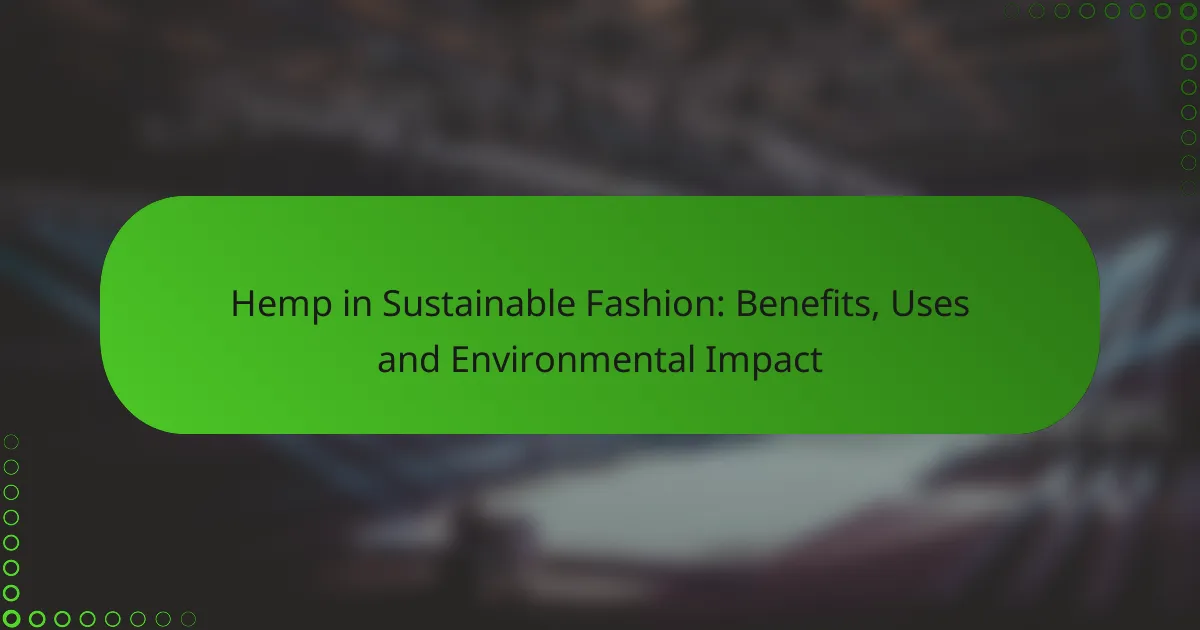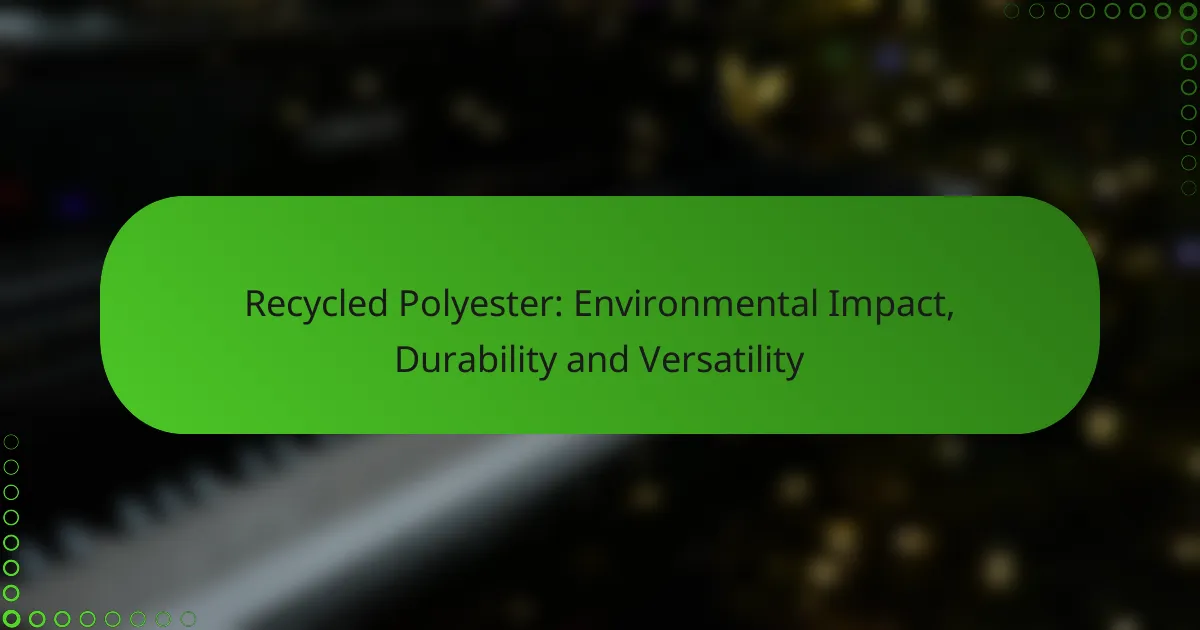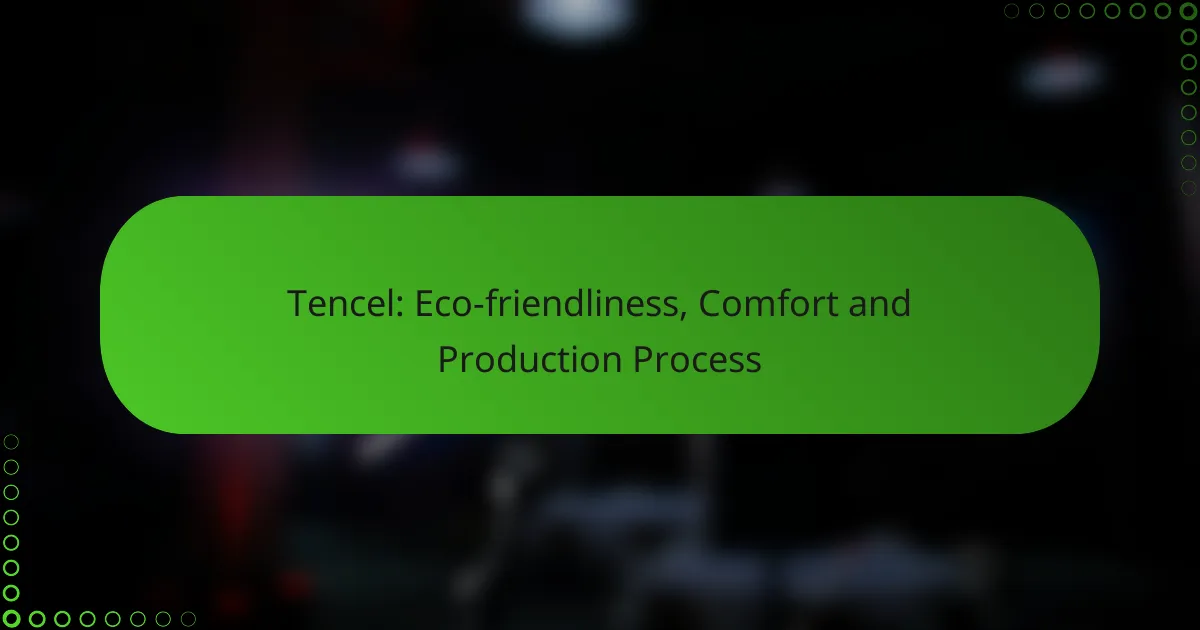Organic cotton stands out as a more sustainable alternative to conventional cotton, emphasizing environmentally friendly farming practices that avoid synthetic chemicals and foster biodiversity. While it often comes with higher production costs, the resulting fabric is typically softer and more durable, contrasting with conventional cotton that may carry harmful residues. Understanding these differences in sustainability, cost, and quality is essential for making informed choices in textile consumption.

How does organic cotton compare to conventional cotton in sustainability?
Organic cotton is generally more sustainable than conventional cotton due to its farming practices that prioritize environmental health. It avoids synthetic chemicals and promotes biodiversity, leading to a reduced ecological footprint.
Lower environmental impact
Organic cotton farming practices are designed to minimize harm to the environment. By avoiding harmful pesticides and fertilizers, organic cotton helps preserve local ecosystems and reduces pollution in soil and waterways.
In contrast, conventional cotton farming often involves intensive chemical use, which can lead to soil degradation and water contamination. Choosing organic cotton can support a healthier planet.
Reduced pesticide usage
Organic cotton is cultivated without synthetic pesticides, which are commonly used in conventional cotton farming. This reduction in pesticide usage not only protects the health of farmers and nearby communities but also supports beneficial insects and wildlife.
Farmers growing organic cotton often use natural pest control methods, such as crop rotation and beneficial insects, which can be more sustainable in the long run.
Soil health improvement
Organic cotton farming practices enhance soil health by promoting biodiversity and using natural fertilizers like compost. This leads to improved soil structure and fertility, which can increase crop resilience and yield over time.
In contrast, conventional cotton farming can deplete soil nutrients and lead to erosion, making it less sustainable in the long term.
Water conservation benefits
Organic cotton typically requires less water than conventional cotton due to its focus on soil health and moisture retention techniques. Practices such as mulching and cover cropping help maintain soil moisture, reducing the need for irrigation.
In regions where water scarcity is a concern, choosing organic cotton can be a more responsible option that contributes to water conservation efforts.
Carbon footprint reduction
Organic cotton farming can lead to a lower carbon footprint compared to conventional methods. The absence of synthetic fertilizers and pesticides reduces greenhouse gas emissions associated with their production and application.
Additionally, organic practices often sequester carbon in the soil, further mitigating climate change impacts. This makes organic cotton a more climate-friendly choice for consumers.
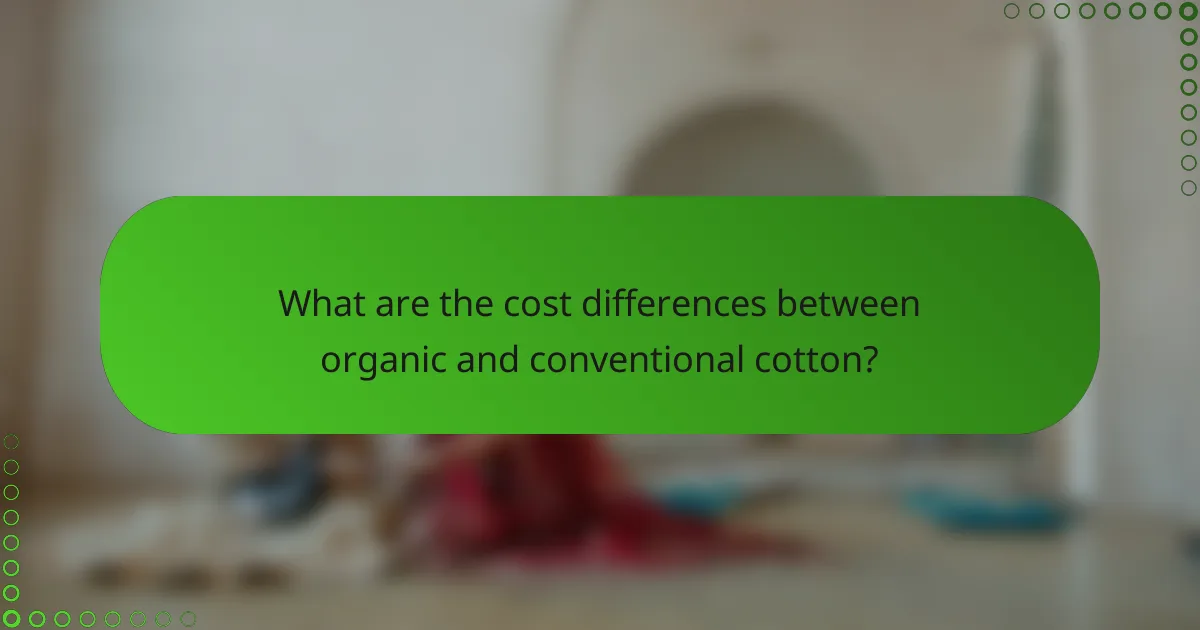
What are the cost differences between organic and conventional cotton?
The cost differences between organic and conventional cotton primarily stem from production methods and market pricing. Organic cotton typically incurs higher production costs due to stricter farming practices, while retail prices can vary significantly based on brand and market demand.
Higher production costs for organic cotton
Organic cotton farming involves more labor-intensive practices and adherence to strict organic standards, which can lead to higher production costs. Farmers must avoid synthetic pesticides and fertilizers, often resulting in lower yields compared to conventional methods. This can increase the cost of organic cotton by approximately 20-50% compared to conventional cotton.
Additionally, organic certification processes require investment and ongoing compliance, further contributing to the overall expense. These factors make organic cotton more costly to produce, which is reflected in its retail price.
Price variations in retail markets
Retail prices for organic and conventional cotton can differ widely based on brand positioning and market demand. Organic cotton products often carry a premium price tag, sometimes 30-100% higher than their conventional counterparts. This is especially true in eco-conscious markets where consumers are willing to pay more for sustainable options.
However, prices can fluctuate based on seasonal supply and demand, so it’s advisable for consumers to shop around and compare prices across various retailers. Sales and discounts on organic products can also provide opportunities for savings.
Long-term savings through sustainability
Investing in organic cotton can lead to long-term savings despite higher upfront costs. Sustainable farming practices can improve soil health and reduce the need for chemical inputs over time, potentially lowering costs for farmers. This can lead to more stable pricing for consumers in the long run.
Moreover, many consumers find that organic cotton products tend to last longer and maintain their quality better than conventional cotton, which can result in fewer replacements and lower overall spending. Choosing organic cotton can be seen as a commitment to sustainability that pays off over time.

What is the quality difference between organic and conventional cotton?
The quality difference between organic and conventional cotton primarily lies in their cultivation methods and the resulting fabric characteristics. Organic cotton is generally softer and more durable, while conventional cotton may contain harmful residues from pesticides and chemicals used during farming.
Softness and durability of organic cotton
Organic cotton is often perceived as softer than conventional cotton due to its natural growing process, which avoids harsh chemicals. The fibers are typically longer and more robust, contributing to greater durability and a luxurious feel against the skin.
When comparing the two, organic cotton can withstand more washes without losing its integrity, making it a preferred choice for high-quality garments. This durability can lead to longer-lasting products, which is a significant consideration for consumers seeking value.
Absence of harmful chemicals
One of the key advantages of organic cotton is its cultivation without synthetic pesticides, fertilizers, or genetically modified organisms. This absence of harmful chemicals not only benefits the environment but also results in a cleaner product for consumers.
Conventional cotton farming often involves the use of toxic chemicals that can remain in the fabric, potentially causing skin irritations or allergic reactions. By choosing organic cotton, consumers can avoid these risks and support healthier farming practices.
Consumer perceptions of quality
Many consumers associate organic cotton with higher quality due to its natural production methods and the absence of harmful chemicals. This perception is reinforced by the increasing availability of organic cotton products in premium markets.
Shoppers often report that organic cotton feels better on the skin and lasts longer than conventional options. As awareness of sustainable practices grows, more consumers are willing to invest in organic cotton for its perceived quality and environmental benefits.
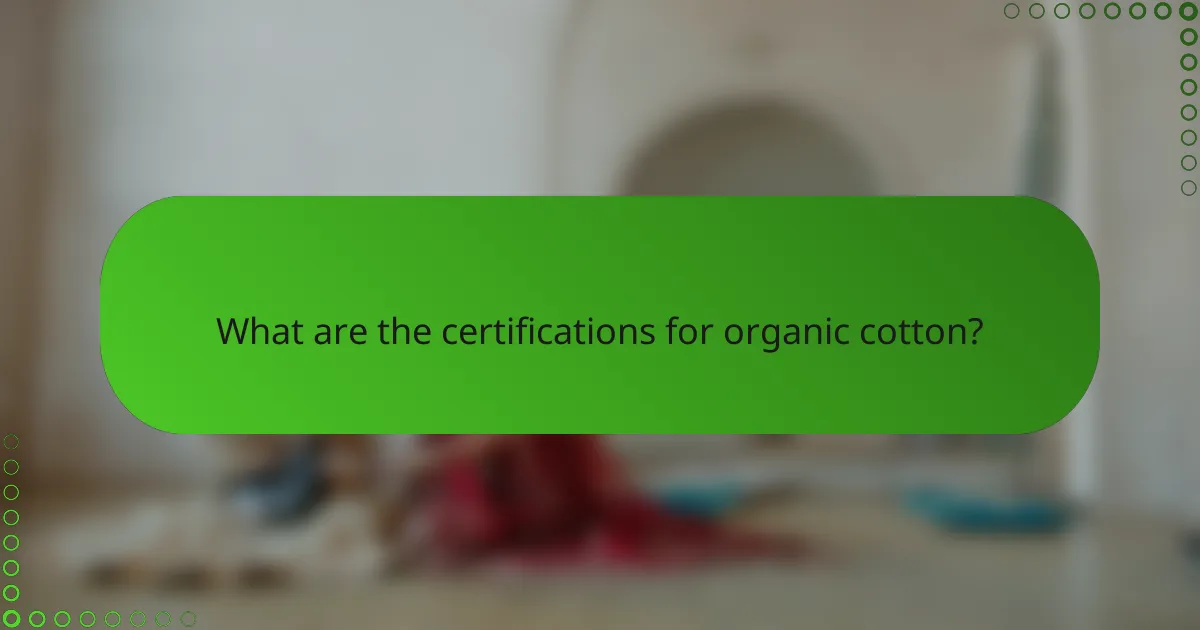
What are the certifications for organic cotton?
Certifications for organic cotton ensure that the cotton is grown and processed according to specific environmental and social standards. These certifications help consumers identify truly organic products and support sustainable practices in the textile industry.
Global Organic Textile Standard (GOTS)
The Global Organic Textile Standard (GOTS) is one of the most recognized certifications for organic textiles. It guarantees that the cotton is not only grown organically but also processed without harmful chemicals, ensuring environmental sustainability throughout the supply chain.
To achieve GOTS certification, products must contain at least 70% organic fibers, and the entire production process must comply with strict ecological and social criteria. This includes fair labor practices and safe working conditions.
OEKO-TEX certification
OEKO-TEX certification focuses on the safety and sustainability of textiles, ensuring that they are free from harmful substances. While it does not specifically certify organic cotton, it complements organic standards by verifying that the final product is safe for human health.
Textiles with OEKO-TEX certification are tested for a wide range of harmful chemicals, making them a good choice for consumers concerned about safety. This certification can be found on a variety of textile products, including those made from organic cotton.
USDA Organic certification
The USDA Organic certification is a well-known standard in the United States that verifies that cotton is grown without synthetic fertilizers, pesticides, or genetically modified organisms (GMOs). This certification is crucial for consumers looking for assurance that their cotton products are genuinely organic.
To qualify for USDA Organic certification, cotton farmers must adhere to strict guidelines for at least three years, ensuring that the soil and crops are free from prohibited substances. This certification is particularly relevant for consumers in the U.S. market, where it is widely recognized.
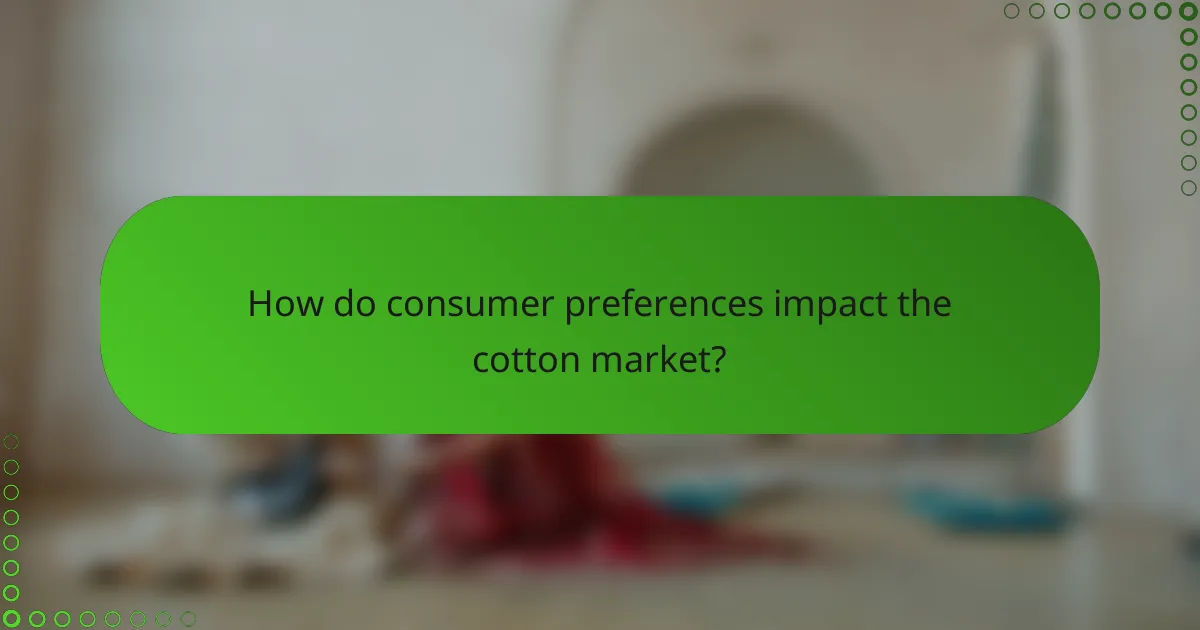
How do consumer preferences impact the cotton market?
Consumer preferences significantly influence the cotton market by driving demand for both organic and conventional cotton. As awareness of sustainability grows, buyers increasingly favor eco-friendly options, which affects production practices and pricing strategies.
Growing demand for sustainable products
The rising consumer interest in sustainable products has led to a notable increase in the demand for organic cotton. Many shoppers are willing to pay a premium for textiles that are produced without harmful pesticides and fertilizers, which can range from 10% to 50% more than conventional cotton. This shift encourages farmers to adopt organic practices to meet market needs.
Retailers are responding by expanding their offerings of sustainable cotton products, creating a broader selection for consumers. This trend not only supports environmentally friendly farming but also promotes a circular economy where waste is minimized.
Influence of eco-conscious brands
Eco-conscious brands play a crucial role in shaping consumer preferences in the cotton market. By prioritizing sustainability in their branding and product lines, these companies attract environmentally aware consumers who are eager to support ethical practices. This influence can lead to increased market share for brands that emphasize organic cotton.
Brands often communicate their sustainability efforts through certifications, such as GOTS (Global Organic Textile Standard), which assures consumers of the organic integrity of their products. As more brands adopt these practices, they not only enhance their reputation but also drive industry-wide changes toward more sustainable cotton production.





